Design and modelling of a solar PV system
1). Data about required annual electricity for present accommodation
For Portsmouth location, the average power consumption per household is 227 kWh/month. To achieve an efficient distributed system, the installed capacity for the PV system should be at least 3924 kWh/ year since average consumption is 2724 kWh/year. A system with a capacity of 3kW will be designed using 30, 100W panels.
2). Location, altitude, roof angle and area.
The latitude and longitudinal angles for the location are 54001’ N and -2002’ W respectively. For maximum irradiation, the panels will be tilted at an angle of 51031’. At this tilt angle, the average light energy hitting the panels is 3.6kWh/m2/day.
3). Radiation area required.
If monocrystalline panels are used with a conversion efficiency of 17%, the annual generated power is given by,
|
|
(1) |
|
|
(2) |
Roof area required is 2137.25m2
4). PV layout
100w panels will be used. To achieve 3 kW output, 2 panels positioned on opposite ends of the roof will be connected in series. Each pair will be connected to one dual charge controller which will be connected to two 10 AH batteries. The outputs from each of the 15 pairs will be connected in parallel to the 24 V inverter for DC to AC conversion.
5). Type of panel and why.
100w Monocrystalline panels will be chosen for the design. This is because of their higher efficiency under shade conditions compared to polycrystalline panels. [1] model no:9046143
|
ATTRIBUTE |
VALUE |
|
V max |
19.55V |
|
I max |
5.12A |
|
Power rating |
100W |
|
Open circuit voltage |
23.15V |
|
Short circuit current |
5.45A |
|
Battery bank |
10Ah |
|
Peak power |
520W |
|
Type |
Monocrystalline |
|
Efficiency |
17% |
|
Dimension |
1055*670*95mm |
|
*Mounting style |
Surface mount |
|
Protection type |
Battery overcharge |
|
Terminal contact type |
Ring |
6). Suitable charge controller and inverter
An MPPT charge controller will be used to monitor the power output of panels. MPPT controllers designed based on incremental conductance algorithm ensure array power output is tracked and maintained at the maximum power point. MPPT controller achieve a higher efficiency compared to PWM controllers. [2]
Since the system is installed on the consumer side of the grid, a single phase pure sine wave inverter will be used. A Sinusoidal pulse width modulated inverter achieves a pure sine wave once filtered using a low pass LC filter.
The charge controllers will be rated for an input 24 V and a maximum current of 10A. Maximum power rating will be 200W. the charge controller selected was the TRITON1206N.
|
System voltage |
24V |
|
Maximum P-V open circuit voltage |
60V |
|
Maximum current rating |
20A |
|
dimensions |
150*80*40mm |
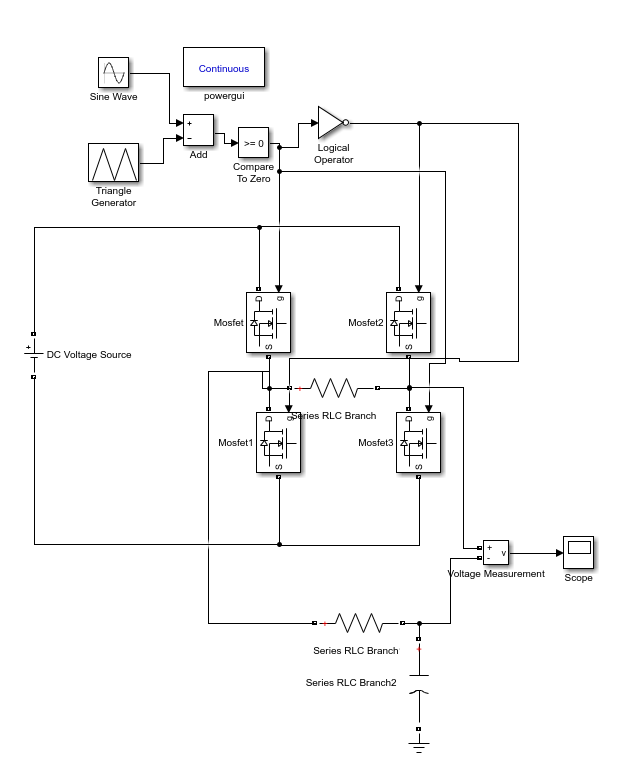
Fig 1. SPWM single phase inverter for an input of 24 V
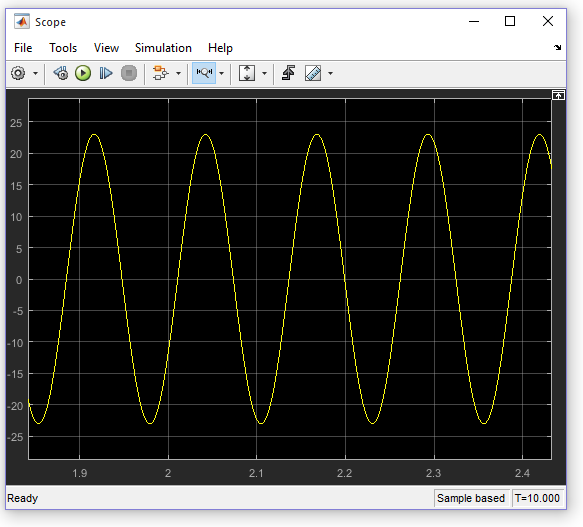
Fig 2. inverter output at 50hZ.
The inverter output will be stepped up by a transformer of ratio 22:240
Such a design is implemented in this inverter model selected.
Model no: RBP-4000S-LED
|
Output type |
Single phase |
|
Output frequency |
50hZ |
|
Maximum input voltage |
24V |
|
efficiency |
0.9 |
|
Maximum output voltage |
240 |
|
dimensions |
550*240*95mm |
|
Protection type |
Short circuit, low voltage, high voltage |
7). Battery
15, 24V batteries each with a capacity of 20 AH will be connected across each pair. Together they will achieve a total capacity of 20*15=300 AH.
|
|
(3) |
|
|
(4) |
The batteries will have a capacity of 7200Wh at a voltage of 24V
8). Payback period at no inflation rate
At no inflation rate, the payback period is 26 years.
9). model
A, B
the PV model was designed from mathematical equations governing:
saturation current (Io)
|
|
(5) |
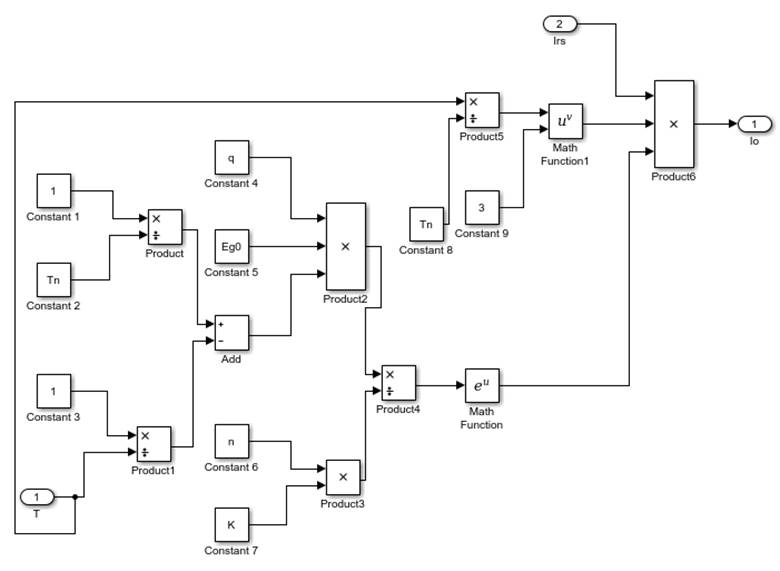
Fig 3. Saturation current subsystem
Shunt current:
|
|
(6) |
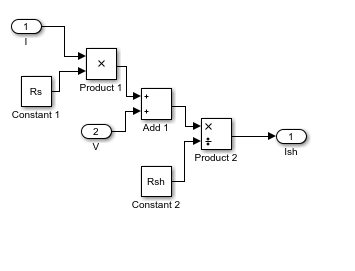
Fig 4. Shunt current subsystem
Photo current:
|
|
(8) |
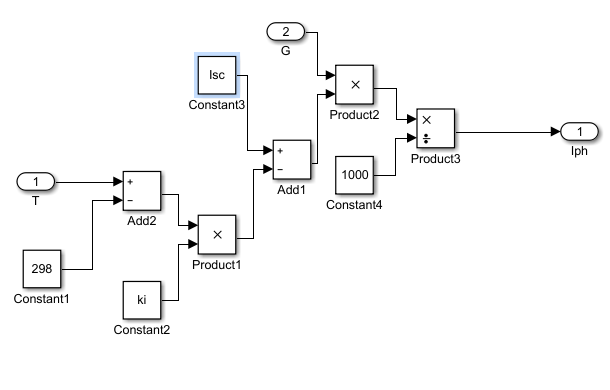
Fig 5. Photo current subsystem
Reverse saturation current:
|
|
(7) |
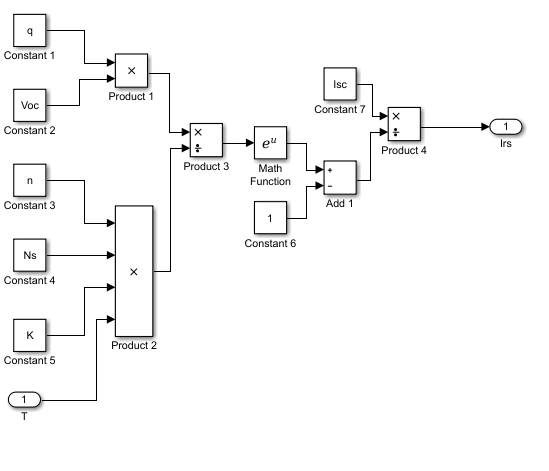
Fig 6. Reverse saturation current subsystem
P-V current:
|
|
(9) |
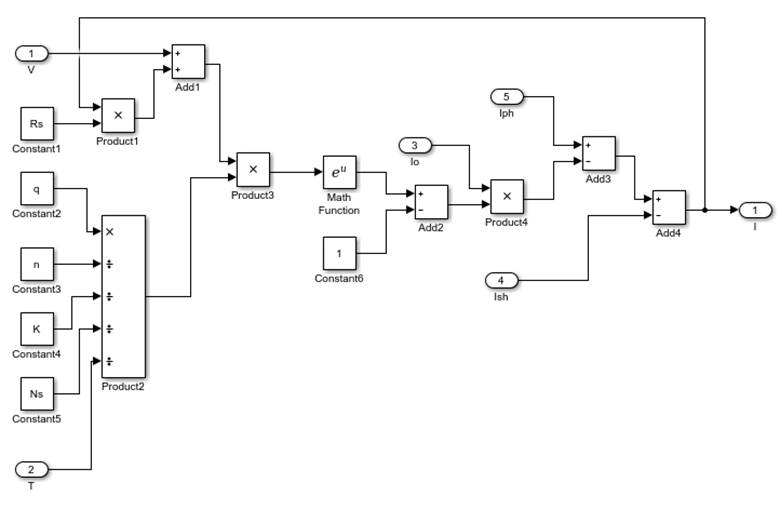
Fig 7. Photo current subsystem
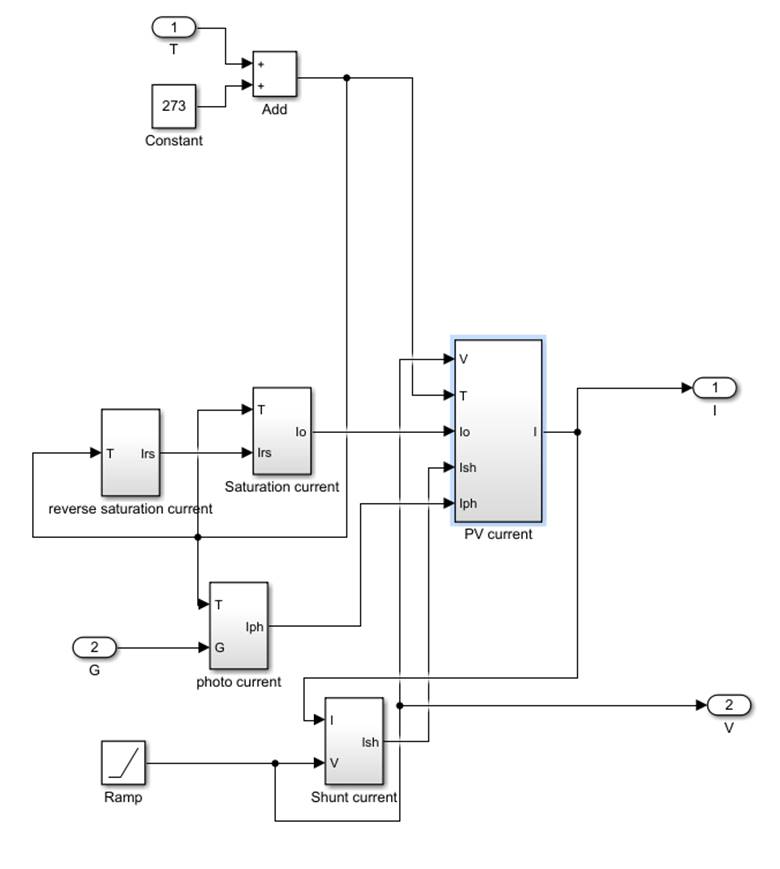
Fig 8. Connected subsystems
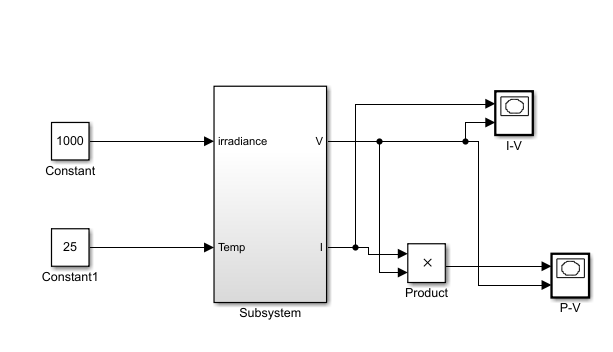
Fig 9. I-V and P-V characteristic generation
c)
at a temperature of 250 C and an irradiance of 1000
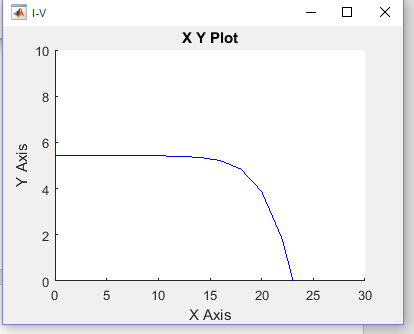
Fig 10. I-V at 250 C and G 1000
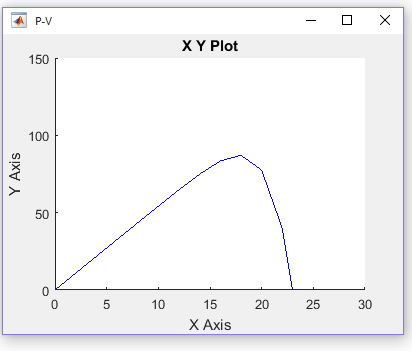
Fig 11. P-V at 250 C and G 1000
At a temp of 250C and irradiance of 200
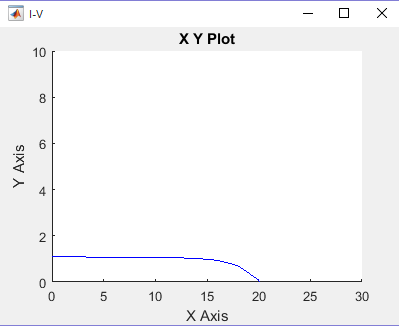
Fig 12. I-V at 250 C and G 200
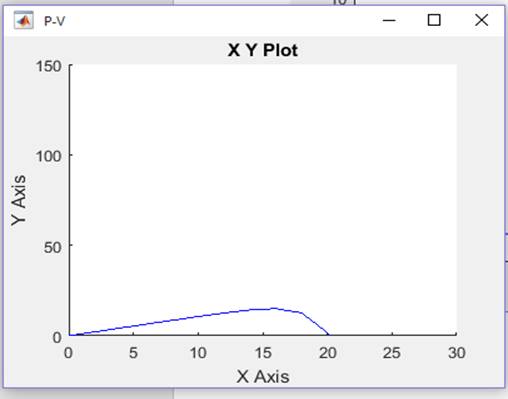
Fig 13. P-V at 250 C and G 200
At a temperature of 600C an irradiance 1000
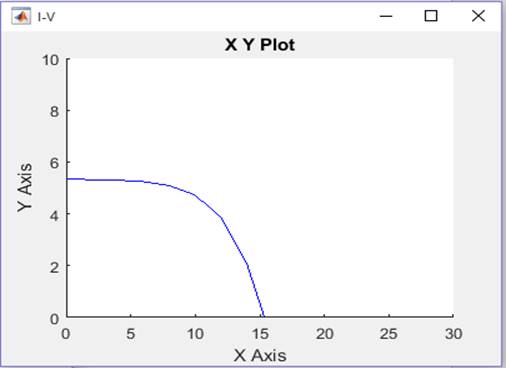
Fig 14.I-V at 600 C and G 1000
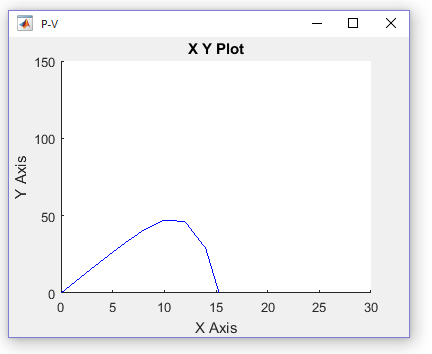
Fig 15. P-V at 600 C and G 1000
As reflected in the graphs above, the power output of a panel is directly proportional to irradiance and indirectly proportional to temperature.
Bibliography
|
[1] |
A. Tascioglu, O. Taskin and A. Varder, "A Power Case Assignment for Monocrystalline and Polycrystalline Solar Panels in Bursa City, Turkey," International journal of photoenergy, vol. 1, 2016. |
|
[2] |
A. Harish and M. Prasad, "Microcontroller Based Photovoltaic MPPT Charge Controller," Internationall journal of Engineering trends, vol. 1, 2013. |




